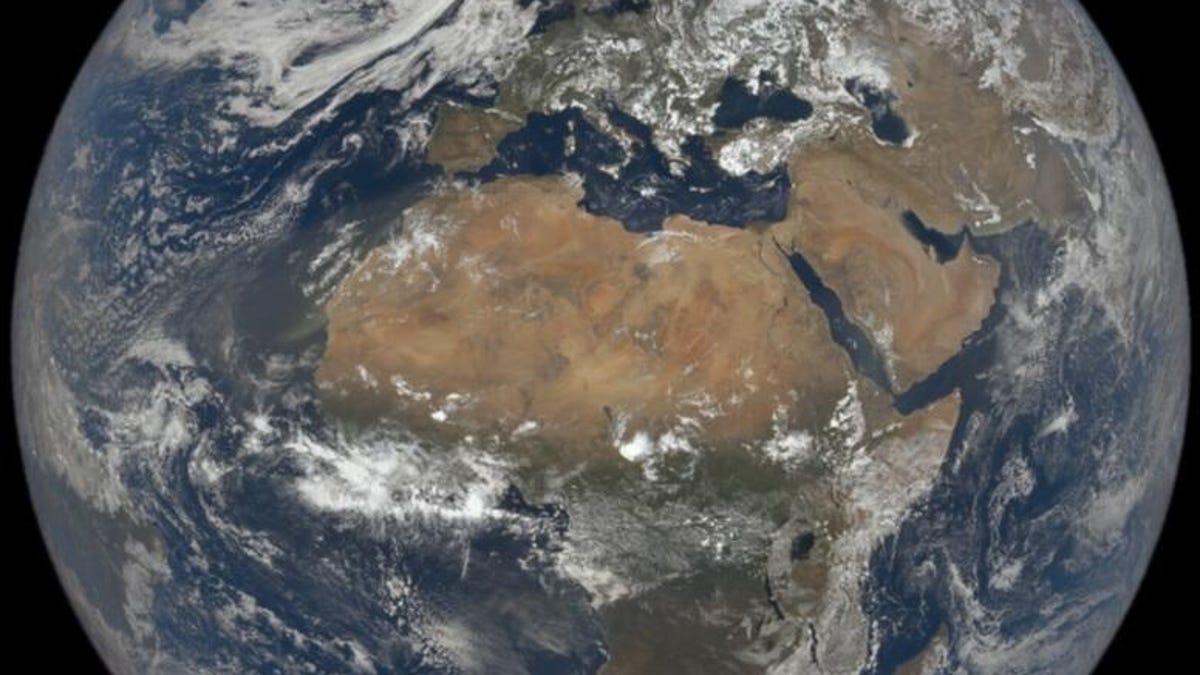NASA shares epic shot of the moon's creepy shadow during June eclipse
The image makes it look like the annular "ring of fire" eclipse scorched the North Pole.

NASA's EPIC, or Earth Polychromatic Imaging Camera, on NOAA's Deep Space Climate Observatory Satellite captured a solar eclipse on June 10.
During a solar eclipse, the moon blocks out the sun and the results can be some truly weird shadows and odd lighting on the surface of the Earth.
But observe the same event from space and it can look a bit more... creepy.
NASA's Earth Polychromatic Imaging Camera (EPIC) aboard NOAA's Deep Space Climate Observatory Satellite (DSCOVR) snapped the above picture of our world during the annular solar eclipse seen over the northern hemisphere on June 10. The shadow cast by the moon shows up as an odd and unsettling blurry brown spot over the north polar region.
The image was taken from the L1 Lagrange point, where the satellite hangs out nearly a million miles away from Earth, providing quite a unique perspective.
"Taking images of the sunlit half of Earth from a distance four times further than the Moon's orbit never ceases to provide surprises," Adam Szabo, the NASA Project Scientist of DSCOVR, said in a statement.
the best I got for the Annular Eclipse from Iqaluit pic.twitter.com/Tm6l5UJ7nG
— Vinnie Karetak ❄ (@arviamiut) June 10, 2021
The June 10 eclipse was a rare annular or "ring of fire" solar eclipse. It also produced plenty of stunning images from the surface of our planet, and a few from the air as well.
The next such eclipse is set for Oct. 14, 2023, and it's a pretty safe bet some satellites will be watching from somewhere.
Follow CNET's 2021 Space Calendar to stay up to date with all the latest space news this year. You can even add it to your own Google Calendar.

